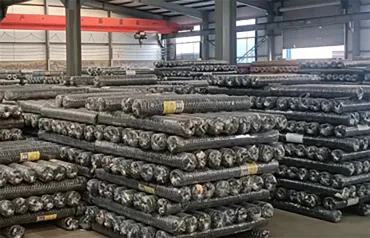Dec . 02, 2024 02:55 Back to list
Choosing the Right Mesh for Your Plastering Needs and Techniques
The Role of Mesh in Plastering An Essential Component for Strong Finishes
Plastering is a fundamental process in construction and renovation, providing not only aesthetic appeal but also structural integrity to walls, ceilings, and other surfaces. One essential component often overlooked in this process is the use of mesh. While it may appear to be a minor addition, mesh plays a crucial role in ensuring that plaster adheres properly and maintains its integrity over time. This article will delve into the importance of mesh in plastering, its various types, and the benefits it brings to construction projects.
What is Plastering?
Plastering is the application of a mixture, primarily composed of lime, cement, or gypsum, that is spread over surfaces to create a smooth, even finish. This process is vital for preparing walls and ceilings for painting or other surface treatments. However, plaster is susceptible to cracking and deterioration, particularly in environments that experience significant temperature fluctuations or structural movements. This is where mesh comes into play.
The Importance of Mesh in Plastering
Mesh acts as a reinforcement mechanism, providing additional support to the plaster and preventing cracks from forming. It is typically made from materials such as fiberglass, metal, or plastic, each offering unique benefits depending on the specific requirements of the project. Mesh serves several key purposes
1. Reinforcement By embedding the mesh within the plaster, it distributes stress evenly across the surface. This is particularly important in areas prone to movement, such as around doorways or windows, where the plaster may be more likely to crack.
2. Adhesion Mesh enhances the bond between the plaster and the substrate (the surface to which it is applied). This is crucial for ensuring the longevity of the plaster. Without proper adhesion, plaster can delaminate, leading to peeling and unsightly damage.
3. Crack Prevention The mesh effectively helps to mitigate the formation of cracks due to shrinkage or thermal expansion. This is essential for maintaining the appearance and durability of the plaster over time.
Types of Mesh Used in Plastering
There are several types of mesh available, each suited for different plastering applications
mesh for plastering

1. Fiberglass Mesh This type is lightweight, resistant to moisture, and highly flexible. It is commonly used in external applications, especially for EIFS (Exterior Insulation and Finish Systems) and for reinforcing stucco.
2. Metal Lath Often used for heavier plaster applications, metal lath provides a strong surface for plaster attachment and is ideal for areas that require higher durability.
3. Plastic Mesh This option is typically used for internal plastering projects. It is resistant to corrosion and provides good flexibility, making it suitable for various wall and ceiling applications.
Benefits of Using Mesh in Plastering
Incorporating mesh into plastering projects yields numerous benefits
- Enhanced Durability The reinforcement provided by mesh increases the overall longevity of plaster finishes, making them suitable for both indoor and outdoor applications.
- Reduced Maintenance With a robust mesh reinforcement, the likelihood of needing repairs due to cracks or peeling diminishes, ultimately saving time and money on maintenance.
- Improved Aesthetics A smooth, crack-free finish enhances the aesthetic appeal of any space, whether residential or commercial. The use of mesh ensures the plaster retains its visual appeal over the years.
Conclusion
In summary, mesh is a critical component in the plastering process, offering reinforcement, improved adhesion, and crack prevention. Its inclusion leads to a durable, aesthetically pleasing finish that stands the test of time. Whether using fiberglass, metal, or plastic mesh, the right choice can make all the difference in achieving a successful plastering project. As builders and renovators seek to enhance the quality of their work, the importance of integrating mesh into plastering techniques cannot be overstated. By prioritizing this often-overlooked element, they can ensure their projects are not only beautiful but also structurally sound.
-
The Role of Field Wire Fence in Grassland Conservation
NewsJul.15,2025
-
Stainless Steel Razor Wire Durability in Coastal Environments
NewsJul.15,2025
-
Enhancing Home Security with Mesh Fences
NewsJul.15,2025
-
Diamond Mesh Wire for Small Animal Enclosures
NewsJul.15,2025
-
Common Wire Nail Tensile Strength Testing for Woodworking
NewsJul.15,2025
-
Barbed Wire Corrosion Resistance Galvanization Techniques
NewsJul.15,2025









